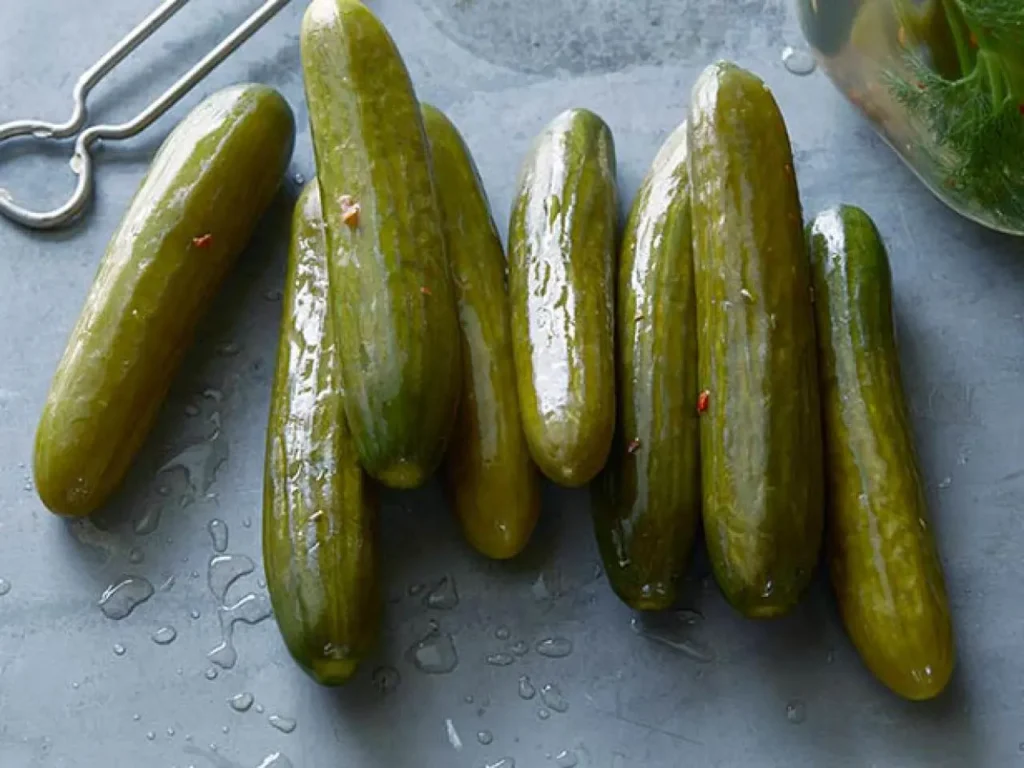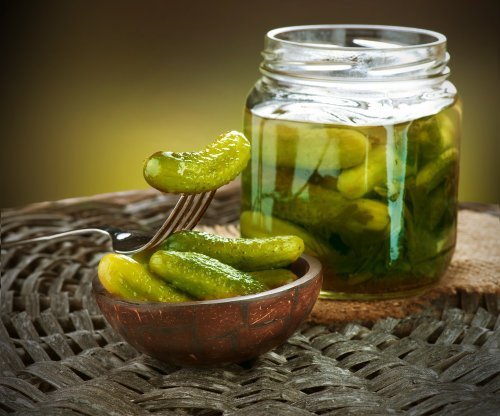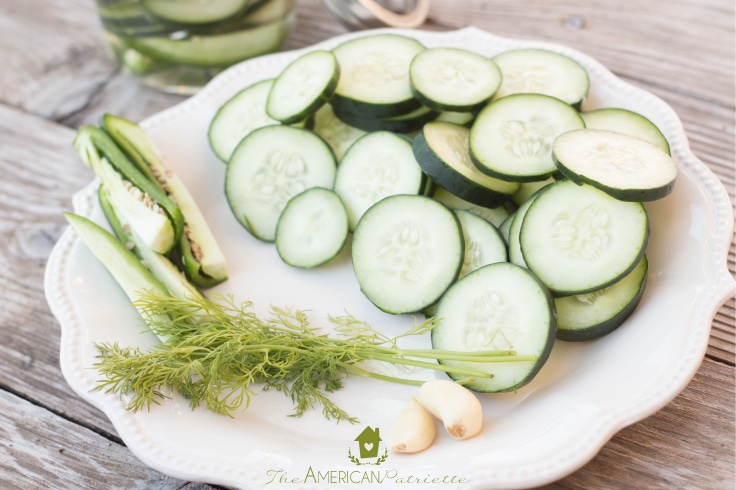Imagine biting into a crisp, tangy spear that explodes with bold flavors—vinegar’s sharp kiss, dill’s aromatic whisper, and garlic’s subtle punch. That’s the magic of American pickles, a humble yet heroic staple that’s tantalized taste buds from colonial kitchens to modern backyard barbecues. Far more than a mere condiment, these emerald gems embody America’s culinary spirit: innovative, diverse, and unapologetically flavorful. Whether you’re a pickle purist craving the classic dill or an adventurer exploring sweet and spicy twists, American pickles offer endless delight.American Pickles In this comprehensive guide, we’ll journey through their rich history, delectable varieties, DIY mastery, health perks, and cultural clout. Prepare to be hooked—your next snack just got a whole lot more exciting.

American pickles aren’t just food; they’re a slice of heritage preserved in brine. Born from necessity in the New World, they’ve evolved into a multi-billion-dollar industry, with over 250 million jars sold annually in the U.S. alone. From the streets of New York to the farms of the Midwest, pickles unite generations with their satisfying snap and versatile vibe.American Pickles Dive in, and discover why this tangy treasure deserves a starring role on your plate—and in your pantry.
The Epic Saga: A Timeless History of American Pickles
Buckle up for a flavorful flashback—American pickles boast a backstory as layered and robust as a perfect brine. While pickling dates back over 4,000 years to ancient Mesopotamia, where cucumbers were brined in the Tigris Valley for preservation, their stars-and-stripes chapter ignites in the 1600s. Native Americans, including the Iroquois, were pickling masters long before European settlers arrived, using local cucumbers soaked in saltwater to combat scurvy on long voyages.
Fast-forward to 1659: Dutch farmers in Brooklyn—then New Netherland—planted cucumbers en masse, transforming the humble veg into a commercial powerhouse.American Pickles By the 1700s, George Washington himself was a pickle aficionado, boasting recipes for “very good pickles” in his personal journals. Thomas Jefferson echoed the sentiment, cultivating cucumber patches at Monticello and declaring them “the most useful species of cucumber.American Pickles” These Founding Fathers didn’t just sign declarations; they signed off on brines, recognizing pickles as vital for troop rations during the Revolutionary War. Soldiers munched on them to stave off hunger and disease, a crunchy lifeline in the fight for freedom.
The 19th century turbocharged the pickle revolution. German and Eastern European immigrants flooded New York’s Lower East Side, hawking barrel pickles from pushcarts—a sight as iconic as the Statue of Liberty. These “kosher dills,” fermented in wooden vats with garlic, dill, and spices, became the gold standard. By 1893, the Chicago World’s Fair showcased American ingenuity with electrified pickle factories, zapping jars for sterilization and catapulting production nationwide. World War II sealed their heroic status:American Pickles The U.S. government diverted 40% of the cucumber crop to GIs, crediting pickles for boosting morale and gut health amid rations.

Post-war boom? Enter mass-market marvels. Brands like Vlasic (with its stork mascot in 1942) and Mt. Olive (1926) turned backyard brines into supermarket sensations. Today, the U.S. pickle market surges past $2.5 billion, fueled by millennial “pickle-obsessed” trends—from pickleback shots to pickle pizza. Yet, amid the frenzy, artisans revive heirloom methods, proving pickles’ enduring allure. From colonial crocks to craft jars, their history whispers resilience: a tangy testament to America’s melting-pot mastery.
This legacy isn’t dusty—it’s dynamic. Explore our internal guide to colonial recipes for hands-on history, or delve deeper via History.com’s pickle timeline.
Bursting with Boldness: Exploring the Diverse Types of American Pickles
What makes American pickles so captivating? Their sheer variety—a symphony of sour, sweet, and spicy that caters to every craving. Unlike uniform global counterparts, U.S. pickles flex flavors influenced by regional rifts and immigrant ingenuity. Let’s unpack the powerhouses, each a crisp canvas for culinary creativity.
The Classic: Dill Pickles
Hail the hero—dill pickles reign supreme, claiming 70% of U.S. sales. Fermented in saltwater with fresh dill weed, garlic, and peppercorns, they deliver a piquant punch that’s refreshingly tart. Full sours mature for weeks, yielding deep, complex notes; half-sours, brined briefly, offer a milder, garden-fresh zing. Perfect for snacking straight from the jar or stacking on burgers, dills embody everyday elegance. Pro tip: Pair with our smoked brisket recipe for smoky synergy.
Sweet Sensations: Bread and Butter Pickles
Born in the Great Depression, these golden slices saved the day. Illinois farmers Omar and Cora Fanning sliced surplus cukes with onions, sweetening a vinegar brine with sugar, turmeric, and mustard seeds for a buttery glow. The result? Irresistibly caramelized crunch, ideal for tangy sandwiches or relish trays. Their sunny hue and subtle heat make them a picnic powerhouse—think elevated potato salad.
Zesty Twists: Sweet and Spicy Varieties
For thrill-seekers, sweet pickles amp the sugar, creating jewel-toned delights soaked in cinnamon-clove elixirs. Gherkins, tiny and tender, add whimsy; cornichons, French-inspired minis, bring vinegary verve to charcuterie. Then there’s the fiery frontier: Jalapeño-laced spears or habanero heat waves, blending tradition with Tex-Mex fire. Discover more in All recipes’ pickle showdown.

Regional Rebels: From Kosher Spears to Polish Halves
New York’s kosher dills, blessed by rabbis for Passover, pack coriander punch. Midwest bread-and-butters lean sweeter; Southern “sweet heat” fuses pickles with peppers. Even okra and green beans get the brine treatment, expanding the family tree. With over 20 styles, American pickles prove diversity is delicious.
Whether spears for stacking or chips for crunching, these types tantalize. Craving variety? Stock up via Mt. Olive’s flavor guide.
Master the Magic: Crafting Homemade American Pickles Like a Pro
Why settle for store-bought when you can conjure pickle perfection at home? DIY brining empowers you with control—freshness, spice levels, and zero preservatives. It’s simpler than you think, yielding jars of crunchy glory in days. Let’s demystify with foolproof recipes, turning your kitchen into a pickle palace.
Essential Gear and Brine Basics
Start with pint jars, fresh pickling cukes (Kirby variety for snap), and a non-reactive pot. The holy trinity? Vinegar (5% acidity for safety), salt (pickling, not iodized), and water in a 1:1:1 ratio. Sterilize jars by boiling, then pack with cukes and aromatics. Simmer brine, pour hot, and seal—voilà, preservation prowess.
Safety first: Follow USDA guidelines to avoid botulism; refrigeration extends shelf life to months. Link to our canning toolkit for seamless setup.
Recipe 1: Classic Dill Spears – Tangy and Timeless
Ingredients (yields 2 pints):
- 4-6 Kirby cucumbers, quartered
- 2 cups water
- 2 cups white vinegar
- 2 tbsp pickling salt
- 4 garlic cloves, smashed
- 2 dill sprigs per jar
- 1 tsp black peppercorns per jar
Steps:
- Pack cukes, garlic, dill, and peppercorns into jars.
- Boil water, vinegar, and salt; pour over, leaving ½-inch headspace.
- Cool, lid, and refrigerate 48 hours for half-sours or 2 weeks for full.
Result? Electric-green spears with herbaceous bite. Inspired by Love and Lemons’ dill mastery. Customize with our herb garden tips.
Recipe 2: Bread and Butter Chips – Sweet, Crunchy Bliss
Ingredients (yields 4 pints):
- 4 cups thinly sliced cucumbers
- 2 onions, sliced
- 3 cups white vinegar
- 2 cups sugar
- 2 tbsp mustard seeds
- 1 tbsp turmeric
- 1 tsp celery seed
Steps:
- Salt cukes and onions; drain after 2 hours.
- Simmer vinegar, sugar, and spices; add veggies and heat 5 minutes.
- Pack hot into jars, process in water bath 10 minutes.
These golden chips elevate PB&Js or tacos. Echoing Kitchn’s foolproof method, they’re a sweet escape.
Advanced Twist: Spicy Garlic Dills
Amp the heat: Add sliced jalapeños and crushed red pepper. Ferment 3-5 days at room temp for probiotic punch. Pair with our spicy wing sauce.
Home pickling isn’t labor—it’s liberation. Yielding vibrant, versatile jars, it connects you to ancestors while wowing guests. Ready for more? Check Food Network’s pickle episodes.
Power-Packed Perks: The Surprising Health Benefits of American Pickles
Don’t let their salty swagger fool you—American pickles pack a nutritional punch that’s as potent as their flavor. Low-cal (just 11 per spear) and fat-free, they’re a smart snack for weight warriors. But the real revelation? Fermented varieties harbor probiotics that supercharge gut health, easing digestion and battling bloating.
Gut Guardians and Immunity Boosters
Lactobacillus from natural fermentation fosters friendly flora, curbing IBS and enhancing nutrient absorption. A jar a day keeps the doctor away—pickles deliver vitamin K for bone strength, vitamin C for collagen, and antioxidants to fend off free radicals. Potassium rivals bananas, aiding blood pressure balance.
Cramp Crushers and Hydration Heroes
Athletes swear by pickle juice: Its electrolytes zap muscle cramps faster than Gatorade, thanks to sodium and vinegar’s acetic acid. Post-workout, it replenishes without sugar spikes. Even non-fermented picks offer fiber for steady energy.
Caveat: Sodium savvy—rinse or low-salt brine to dodge excess. For balanced bites, see our low-sodium swaps. Dive deeper with Cleveland Clinic’s pickle insights.
In moderation, pickles aren’t indulgence—they’re investment in vitality.
Cultural Crunch: Pickles as the Heartbeat of American Cuisine and Lore
Pickles aren’t sidelined; they’re stars in America’s gastronomic galaxy. From ballpark buns to barbecue sides, they infuse everyday eats with zesty zest. In Chicago’s iconic “dragged through the garden” hot dog—loaded with relish, spears, and sport peppers—pickles symbolize Windy City wit. New York’s delis slather them on pastrami, while Southern fried pickle chips (battered and dunked in ranch) rule tailgates.
Icons in Pop Culture and Cravings
Pregnancy lore? Pickles top “bump foods,” their tang taming nausea. Hollywood nods abound: From “The Pickle Surprise” in Pulp Fiction to Seth Rogen’s An American Pickle, they pickle plots with humor. Festivals like Pittsburgh’s Picklesburgh draw thousands for brine-soaked bashes, blending music and munchies.
Immigrant roots shine: Eastern Europeans birthed the barrel trade, now a Lower East Side landmark. Today, the “prickleback” shot—whiskey chased by brine—fuels bar scenes coast-to-coast.
In holidays, they’re heroes: Thanksgiving tables echo Pilgrim feasts with pickled relishes. Explore pairings in our holiday sides, or savor street cred via The Conversation’s pickle craze.
Pickles unite, delight, and define—America’s crunchy cultural glue.
Zany Zingers: Fun Facts and Trivia About American Pickles
- Presidential Preference: FDR hosted the first “pickle picnic” at the White House in 1935.
- Space Snack: Astronauts munched Vlasic dills on Skylab in 1973—zero gravity’s perfect crunch.
- World Record: The largest pickle weighed 8.3 pounds, grown in Michigan.
- Economic Engine: U.S. farms harvest 150,000 acres of cucumbers yearly.
- Oddball Ode: “Pickle juice” beauty hacks promise clearer skin—vinegar’s astringent ace.

These nuggets prove pickles’ playful punch. Quiz friends with our trivia night kit.
Assorted Delights: A Visual Feast of American Pickle Varieties
No article on pickles would be complete without a showcase. Behold this bounty of beloved types, from crisp dills to sweet slices—each a testament to tangy innovation.
Sealing the Brine: Why American Pickles Deserve Your Devotion
From ancient brines to TikTok trends, American pickles have pickled our hearts—and palates—for centuries. Their versatility—snack, side, or star—fuels feasts and fosters family bonds. Health halo? Check. Cultural cachet? Absolutely. In a world of fleeting fads, pickles endure: crisp, bold, and brilliantly simple.
